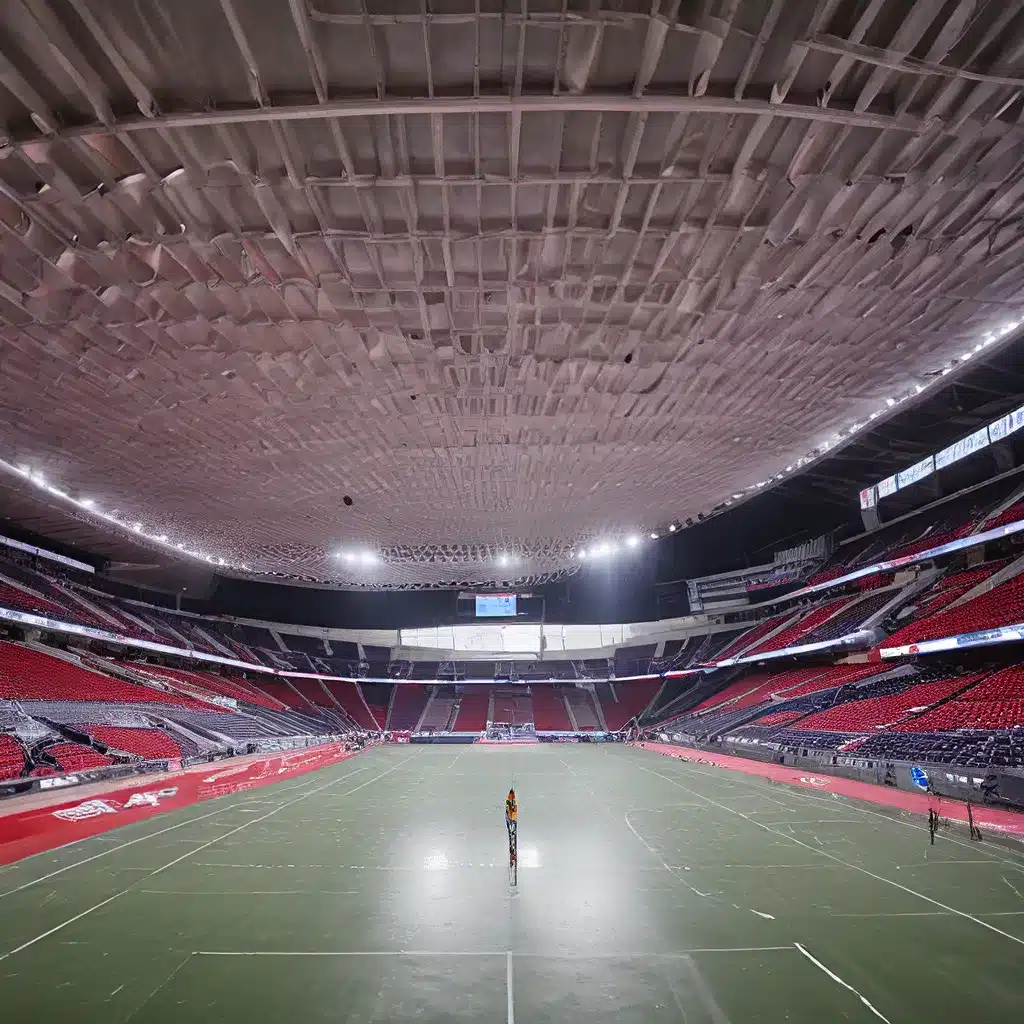
The Palacio de Deportes de Valladolid, also known as the Pabellón Polideportivo Pisuerga, is an iconic sports arena located in the heart of Valladolid, Spain. Designed by the renowned Spanish architect Julio Cano Lasso, this captivating structure has become a local landmark and a source of pride for the city’s residents.
The Architectural Masterpiece
The Palacio de Deportes de Valladolid is a true architectural marvel, blending functionality and aesthetic beauty to create a truly mesmerizing experience. Completed in 1988, the stadium’s design is a testament to Cano Lasso’s innovative approach and his ability to seamlessly integrate the building into the surrounding urban landscape.
One of the most striking features of the Palacio de Deportes is its unique elliptical shape, which gives the arena a distinct and visually appealing silhouette. The curved, glass-enclosed facade allows natural light to flood the interior, creating a bright and airy atmosphere that is both inviting and practical for sporting events.
The structural design of the stadium is equally impressive, with a reinforced concrete frame that supports the weight of the roof and the seating areas. The retractable roof is a particular highlight, allowing the arena to be easily adapted to different weather conditions and event requirements.
Versatility and Functionality
The Palacio de Deportes de Valladolid is not just a stunning architectural achievement; it is also a highly functional and versatile sports facility. Designed to host a wide range of sporting events, the arena can accommodate everything from basketball and handball to ice hockey and figure skating.
The seating capacity of the Palacio de Deportes is an impressive 9,000, providing ample space for crowds to gather and support their favorite teams. The modern amenities and state-of-the-art facilities within the stadium ensure that both athletes and spectators enjoy a comfortable and enjoyable experience.
In addition to its sports-focused functions, the Palacio de Deportes has also been used for a variety of other events, such as concerts, conferences, and exhibitions. This versatility has made the arena an important cultural and social hub within the city of Valladolid.
Sustainable Design and Environmental Impact
The Palacio de Deportes de Valladolid is not just a visually stunning building; it is also a shining example of sustainable design. Cano Lasso’s architectural approach prioritized energy efficiency and environmental responsibility, with features like the retractable roof and natural lighting playing a key role in reducing the arena’s carbon footprint.
The use of renewable materials and energy-efficient technologies in the construction and operation of the Palacio de Deportes further reinforces the stadium’s commitment to sustainability. This commitment has earned the arena recognition and accolades from various environmental organizations, positioning it as a leader in sustainable sports infrastructure development.
A Symbol of Valladolid’s Pride
The Palacio de Deportes de Valladolid has become more than just a sports arena; it is a symbol of the city’s pride and cultural identity. The arena’s striking design and versatility have made it a beloved landmark, attracting visitors from all over the world to experience the unique atmosphere and the city’s rich sporting heritage.
The Palacio de Deportes has also played a significant role in the development of sports and recreation in Valladolid. As the home venue for the city’s professional basketball and handball teams, the arena has been at the heart of the local sports community, fostering a sense of unity and pride among the residents.
Conclusion
The Palacio de Deportes de Valladolid is a true architectural and engineering masterpiece, showcasing the remarkable talents of Julio Cano Lasso and the city’s commitment to sustainability and community. With its striking design, versatile functionality, and environmental consciousness, the stadium has become an iconic symbol of Valladolid’s cultural and sporting identity.
As visitors explore the Palacio de Deportes, they will be captivated by the building’s mesmerizing form, its state-of-the-art facilities, and the rich history that it represents. This is a must-visit destination for anyone interested in experiencing the dynamic intersection of sports, architecture, and sustainability in Spain. For more information on the Palacio de Deportes de Valladolid and other remarkable sports venues, be sure to visit Old Stadium Journey.

